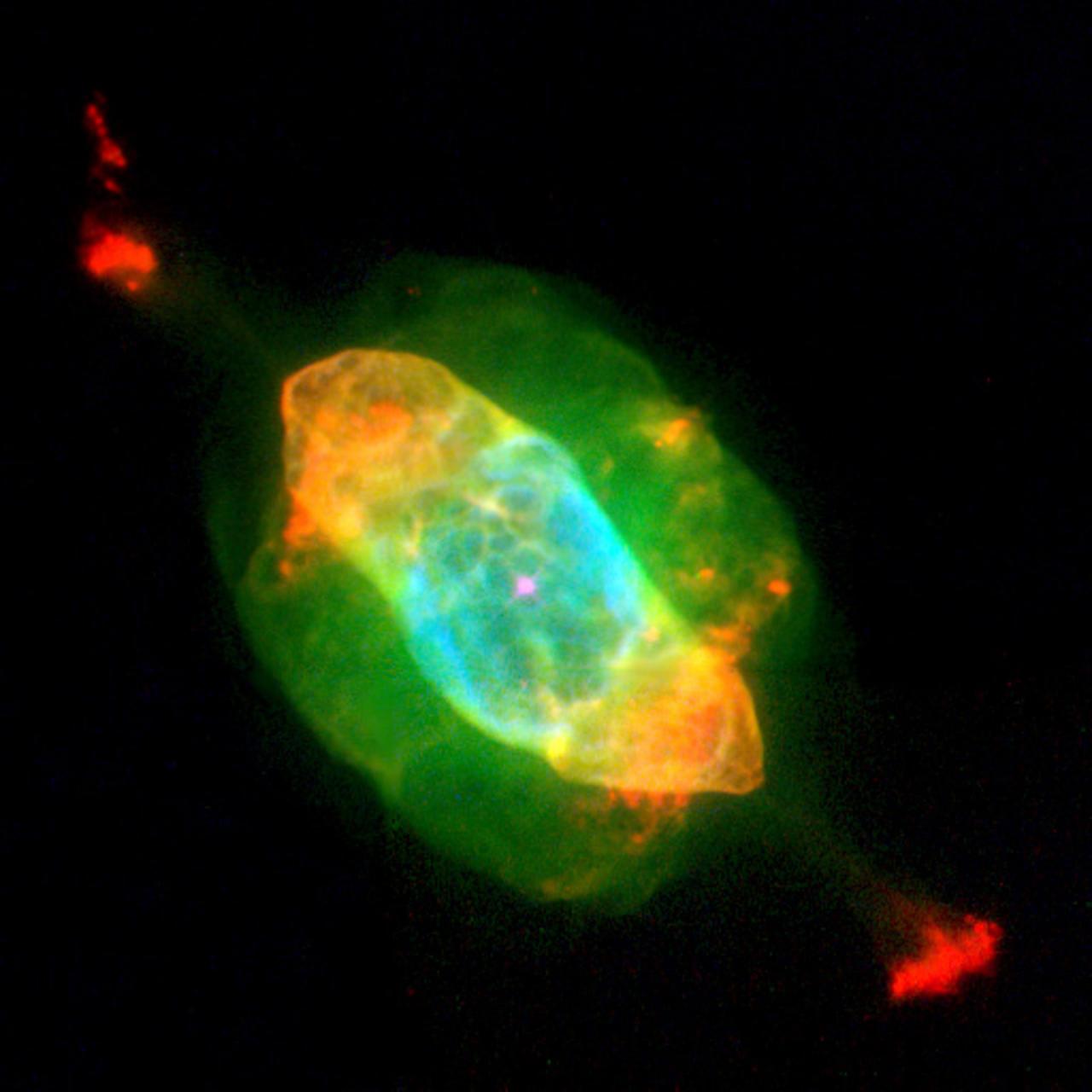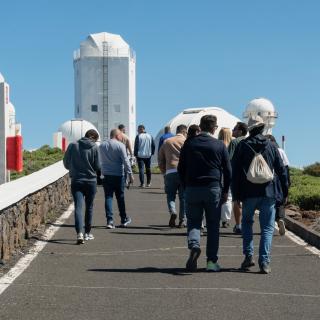A planetary nebula is the corpse that remains when a star, like our Sun, dies. When planetary nebulae were observed for the first time with a telescope, they presented a roughly circular shape, resembling that of the gas giant planets. Hence their name,
which remains in use even though they are very different from planets. The article published recently by Astronomy & Astrophysics, and tagged such a "highlight", is the first detailed study of a galactic planetary nebula with the MUSE integral field spectrograph on ESO's Very Large Telescope (VLT). This work has revealed an unexpected complexity in the gas and dust expelled by a giant red star at the end of its life. The distribution of temperatures and densities within the nebula challenges current techniques to unravel the history of the formation processes and demonstrates the potential of the MUSE instrument to revise research concerning planetary nebulae.
The appearance of the nebula NGC 7009, known as the Saturn Nebula because of its resemblance to the ringed planet, hints at its complexity. This nebula shows a series of structures, associated with different atoms and ions. "The study revealed that these structures represent real differences in properties within the nebula, such as higher and lower density, as well as higher and lower temperatures," explains Jeremy Walsh, researcher at the European Southern Observatory (ESO) and first author of the study. Walsh reports one of the implications is that "historical - and simpler - studies based on the morphological appearance of planetary nebulae seem to signal important links to the underlying conditions within the gas."
With a single shot, MUSE can obtain 900000 spectra of tiny patches of the sky, which can provide enough data for years of analysis. By disentangling the information buried in this huge amount of spectra, the team responsible for the investigation has obtained maps of up to four temperatures and three densities, all of them different, showing that the gas inside this nebula is by no means uniform.
"The presence of dust within a nebula could also be deduced from the change in color between different emission lines of hydrogen, whose expected color can be determined by atomic theory," says Ana Monreal Ibero, second author of the article and researcher at the IAC. She adds: "Our team found that the distribution of dust in the nebula is not uniform, but shows a drop at the rim of the inner gas shell. This result suggests sharp changes in the ejection of dust during the last death rattles of the solar-type star or, alternatively, of local dust formation and destruction.
On the other hand, helium is an element which is expected to be uniformly ejected from the old star. This expectation was tested by the authors who mapped the amount of this element in NGC 7009. Interestingly, they found apparent variations following the shell morphology of the nebula. "This implies that current methods of determining helium need improvement, or that the assumption that the abundance is uniform should be rejected." says Monreal Ibero.
These conclusions show the important role for MUSE in the study of planetary nebulae and opens the door for similar work on more nebulae. Such studies should allow for more general conclusions leading to improvements in understanding of nebulae throughout the Universe.
J. R. Walsh, A. Monreal-Ibero, M. J. Barlow, T. Ueta, R. Wesson, A. A. Zijlstra, S. Kimeswenger, M. L. Leal-Ferreira and M. Otsuka. An imaging spectroscopic survey of the planetary nebula NGC 7009 with MUSE. A&A, volume 620, December 2018. DOI: https://doi.org/10.1051/0004-6361/201833445
Links of interest:



